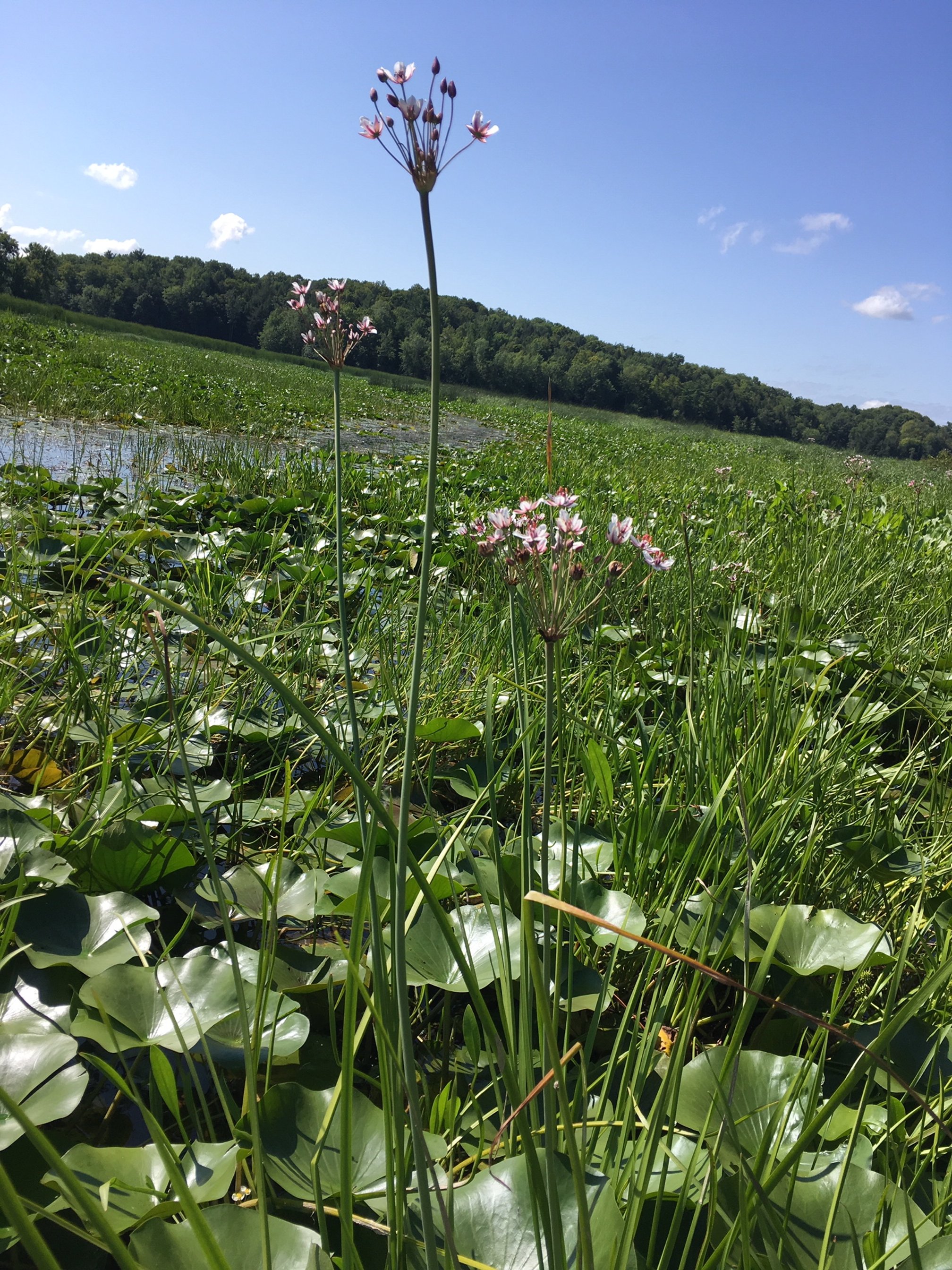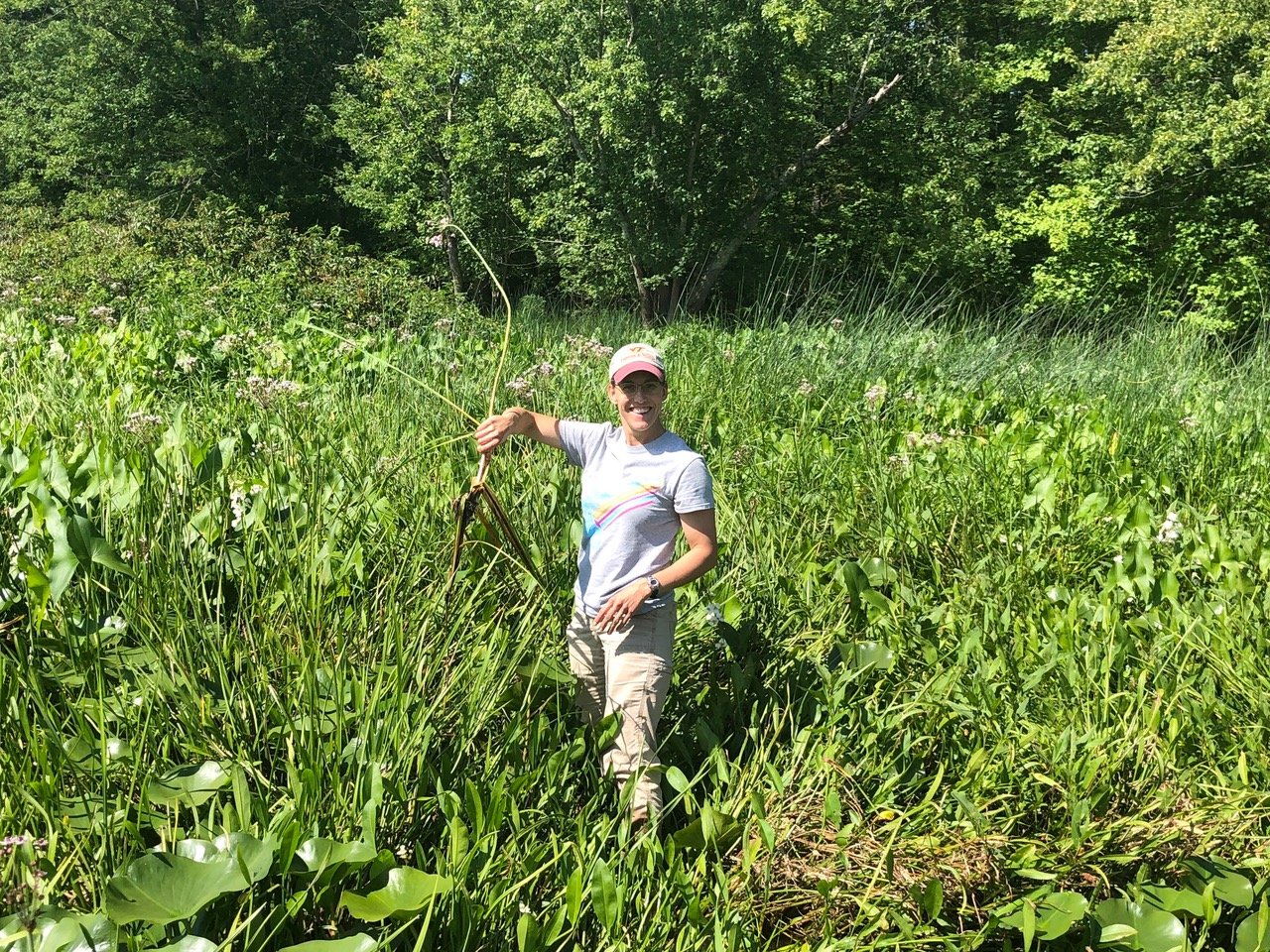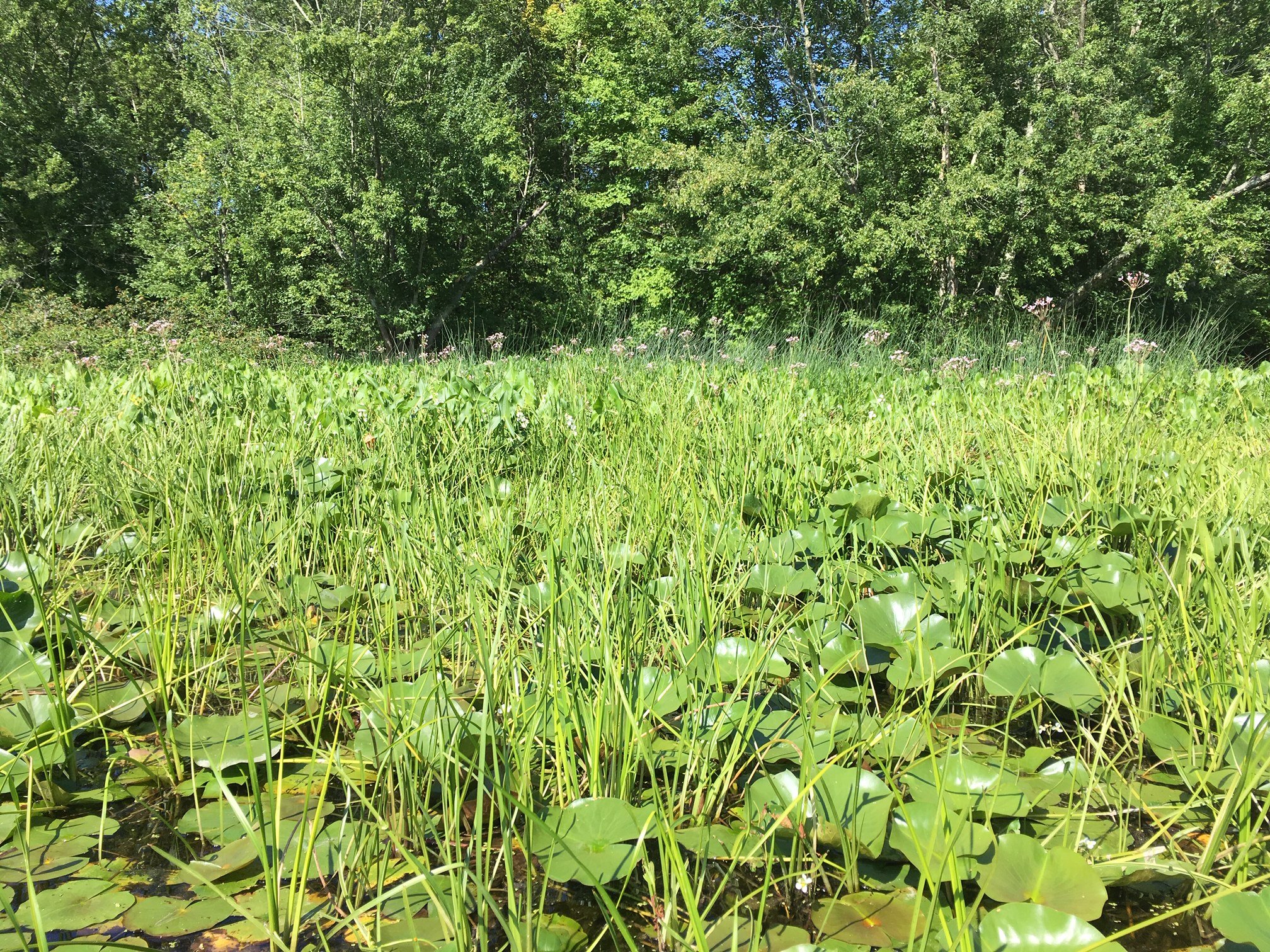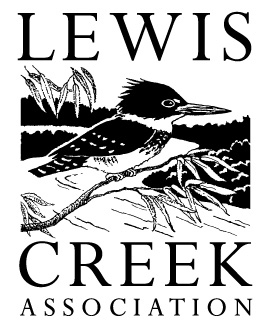In Charlotte’s Town Farm Bay, another non-native invasive species is spreading. Flowering rush is an emerging threat to Lake Champlain wetlands and floodplain forests of Champlain direct drainage streams. Lewis Creek Association’s related work in 2015-2018 alerted us to the growing presence of flowering rush in our priority wetlands. Research in other states showed that this species could be a serious threat to the diverse natural communities of the Town Farm Bay 53-acre wetland complex. Lewis Creek Association (LCA) then applied for and received grant funding from the Lake Champlain Basin Program in 2019 for a multi-year study that has now wrapped up.
What is flowering rush? It is a reed-like wetland plant with pink flowers that can grow along shorelines and in water up to 9 feet deep. Although beautiful, it has been classified as a class B noxious weed, meaning that the sale, movement, and distribution of the plant is prohibited in Vermont. It can outcompete native aquatic plants, and may provide unsuitable shelter, food, and nesting habitat for native animals. In addition, its dense growth along shoreline areas makes it difficult to access open water for recreation.
LCA was interested in learning more about this plant’s growth locally and if the plant could be easily controlled with volunteer help. With the help of Robert Hyams of HRS/Riverscape Ecology and local volunteers, we surveyed the Town Farm Bay wetland to determine flowering rush’s distribution, and set up some test plots to look at different treatments (pulling out flowering plants by their roots, or cutting plants back multiple times a year). We also collected samples of plants for genetic analysis. Interestingly, there are two types of flowering rush: one is sterile (triploid plants with three sets of chromosomes that don’t produce viable seeds) and one can produce seeds that produce new plants (diploid with two sets of chromosomes).




We learned that the plants in Town Farm Bay are likely diploid, so seeds can produce new plants. Flowering rush is distributed throughout much of the emergent plant community within the bounds of the Thorp/Kimball wetland, with the highest concentrations along the north shore of the Thorp Brook wetland. We discovered that plants bloom throughout the growing season, so that several surveys would need to be completed over the season to fully estimate the number of flowering rush plants present. Visual evidence suggests that flowering rush is increasing in density, but this was hard to determine conclusively due to year-to-year differences in populations and water levels. Unfortunately, the portion of the study that looked at if cutting plants back would minimize their growth the following year was inconclusive; plants did not seem to re-grow from the same cut area, but may have re-sprouted from the same rhizome. Further study (perhaps in a lab) would be necessary to determine if multiple cuttings per year impact the plant over time. In the area we hand-pulled plants out by their rhizomes/roots, there was a reduction in the number of plants in both the test plot and in the control plot (where plants were not removed). It is unclear why this is. It is possible that hand-pulling of plants will reduce the population over time, but unfortunately, it is a very difficult job requiring getting out of (and back into!) canoes in knee-deep muck, and may also disturb other sensitive plants in the wetland if it were to be instituted on a large scale. In conclusion, although we learned quite a bit about our local flowering rush population, this study did not conclusively demonstrate a good method for control. LCA continues to investigate and control non-native invasive species in our high quality and priority wetlands, and hopes to learn more about and apply possible control methods through future studies.
For further information or questions, please reach out to Kate Kelly, LCA Program Manager, at lewiscreekorg@gmail.com or 488-5203.
This project was funded by an agreement awarded by the Great Lakes Fishery Commission to the New England Interstate Water Pollution Control Commission in partnership with the Lake Champlain Basin Program. NEIWPCC manages LCBP’s personnel, contract, grant, and budget tasks and provides input on the program’s activities through a partnership with the LCBP Steering Committee. The viewpoints expressed here do not necessarily represent those of NEIWPCC, the LCBP Steering Committee, or GLFC, nor does mention of trade names, commercial products, or causes constitute endorsement or recommendation for use.

